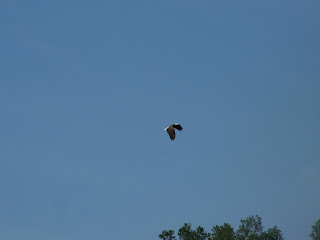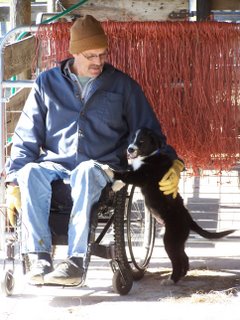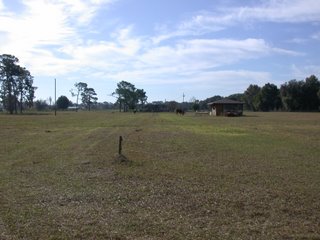One of my favorite people to read is Victor Davis Hanson. This is my good fortune because even though I stay busy, he seems to be busier still. Every time I’m in the mood he has plenty of new material for me to look at. The man writes prolifically.
In the not too distant past he has commented on farm politics as well as the lack of historical knowledge of the MBA crowd. See
http://victordavishanson.pajamasmedia.com/2007/05/19/not_with_a_bang.php and
http://victordavishanson.pajamasmedia.com/2007/03/22/post_12.php .
I farm part time and do software engineering as my day job. I do the software work from my office here on the farm for the most part. A sweet situation if I do say so myself.
I started doing software, programming and system administration mostly, some systems analysis, twenty some years ago as a Telephone Company employee (GTE). It’s reasonably interesting work and the money’s good.
I’ve met quite a number of MBA types over the years, collectively known as “suits” among the geeks and propeller heads that inhabit the cubicles of the corporate world.
I’ve been working within the same technical niche for all this time, software systems used to manage voice/data networks.
I’ve changed employers four or five times, but I still work with many of the same people I did years ago, and serve many of the same customers. The people that stay are the technical people.
Suits invariably have a planning horizon that does not extend past the end of the quarter, and time in place on any given job that is not much longer. I don’t know where they come from or where they go, I just notice that they don’t stay around long.
This all leads to the subject of historical prospective. See, I’m trying at least to tie this thing together.
I got interested a few years back in Civil War history, and the period leading up to it. I did a bunch of reading and ran into some ideas I had not come across before.
It seems that in the early 19th century there was considerable discomfort in some quarters with the whole notion of working for wages.
For one thing, almost no one did it. The vast majority of people were farmers and of course, self employed. Most other people were artisans of some sort, or merchants.
Cobblers, blacksmiths, store keepers, and the like. Wage labor is a product of the industrial revolution, a new thing at the time.
The thought was that if you were not in control of your own time, you were slave.
Slavery was a common enough situation at the time, not just black chattel slavery in the South, but all sorts of indenture and servitude. The sort of thing people endured to repay debt or learn a trade.
Selling your time by the hour was thought to be something like whoring.
Obviously, this became by far the most common way to earn a living. All of us who have done it have felt at times like the whoring theory had something to it.
This brings us to farming. The sort of farming we do here, part time though it is, is pay cash for all inputs, and direct market everything we don’t consume ourselves.
Yes, it’s easier to do this with an off farm income, would not be possible with out it for most folks like me. Still, the USDA’s own statistics show that most farmers today are folks like me.
And this brings us to farm politics, even though the reader may have lost all hope I’d get back to that.
Like I said, most people who farm are like me, part time or a member of a farming family with considerable off farm income.
One habit I have is watching farm shows on TV. Most of this stuff is mainstream agribusiness.
If all one knew of farming was learned from these shows, a casual observer could be forgiven for coming to the conclusion that agriculture is mostly run by the Federal Government as a mater of national policy. They might even worry that a long congressional recess could cause famine, if we don’t all die of bird flu first.
Or that would be the case if anyone took this political noise at face value, but of course we expect the same sort of doublespeak with the politics of agribusiness that we get with the politics of anything else.
See
http://victorhanson.com/articles/hanson021002.html for some or Mr. Hanson’s observations (from the Wall Street Journal).
What is discussed in Washington under the guise of agriculture has little in common with what comes to mind when people think of farming.
Certainly farmers like me are not much involved in the politics of agriculture, at least not by choice.
For example, most of the money in the last several farm bills is spent of things like food stamps and school lunch programs. Much of the rest is subsidies paid for commodity crops that the market does not want at the threshold price set by fiat in the farm bill.
Please understand, I don’t believe that the government should spend this money differently than they do now, change things so I get a bigger cut.
This is like any number of government programs that do more harm than good and would just go away if it was up to me. I also know it is not up to me.
My observation is that meaningful change in agricultural practice is not just difficult, it is almost always illegal.
As near as I can tell, regulations about how farming, or the processing and sale of farm products such as food items, must be done are crafted when bureaucrats are told how established market shareholders do things and then decree “This is how it must be done”.
Doing things differently, also known as innovation, therefore becomes illegal.
Taking any product all the way from production to the final consumer without going through some organization big enough to have lawyer on staff is a risk.
There is simply no way to be sure you know what the rules are.
The risk is that at any time some entity you never knew existed may decide you are doing something wrong and hassle you for it.
This could result in anything from a scolding to losing your farm and/or doing jail time.
The odds are you won’t be bothered, if you do things on a small scale and keep your customers happy. Bureaucrats are not prone to go out of their way to do much of anything, even if they can. They have no real reason to notice the existence of most farmers, even less reason to cause them problems, still it can and does happen.
This keeps most small-scale producers out of the retail market, and greatly slows the pace of innovation. That is too bad, because new ideas and practices are needed in agriculture more than in most industries.
I advocate just going ahead, and when I think an idea is good enough, that is what I do. Farming is all about risk after all. We deal with heat, cold, drought, flood, and all the rest.
 The rain stopped and I doubled my bet, cutting a second field and just let the first lay there and attempt to dry out.
The rain stopped and I doubled my bet, cutting a second field and just let the first lay there and attempt to dry out. The idea is to see if the extra work of plowing is justified by the resulting growth.
The idea is to see if the extra work of plowing is justified by the resulting growth.













































